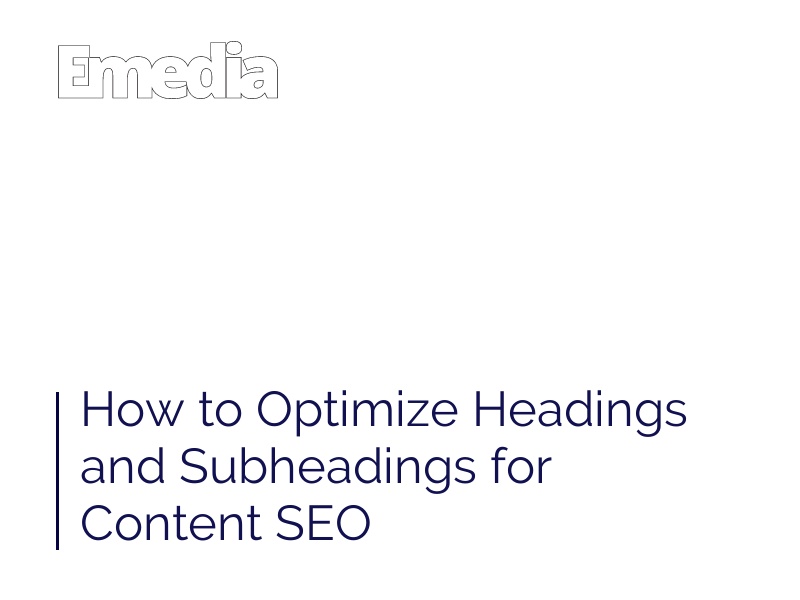Are you looking to boost your content's visibility in search engines?
Learn how to optimize your headings and subheadings for content SEO. In this article, we'll show you the best practices for structuring your headings and subheadings, including the importance of keyword research and utilizing HTML tags.
By following these tips, you'll not only improve readability but also increase your SEO performance.
Don't miss out on the opportunity to optimize your content and gain more visibility.
Best Practices for Headings and Subheadings in Content SEO
You should always use clear and concise subheadings to improve the readability and SEO of your content.
Avoid making common mistakes in using headings and subheadings in content SEO, such as using vague or generic headings that don't accurately represent the content.
Instead, focus on choosing the right headings and subheadings that accurately reflect the main points of your content. This won't only make it easier for readers to navigate through your content but also help search engines understand the structure and relevance of your content.
When choosing headings and subheadings, consider incorporating relevant keywords that are related to your content and can help improve your SEO rankings.
Importance of Keyword Research in Optimizing Headings and Subheadings
Keyword research plays a crucial role in optimizing headings and subheadings for content SEO. By conducting effective techniques for keyword research, you can ensure that your headings and subheadings are optimized for search engines and attract the right audience.
Here are four reasons why keyword research is important in optimizing headings and subheadings:
- Relevance: Keyword research helps you identify the most relevant keywords and phrases that your target audience is searching for. By incorporating these keywords into your headings and subheadings, you can increase the chances of your content appearing in relevant search results.
- Competitor Analysis: By conducting competitor analysis, you can identify the keywords your competitors are targeting and gain insights into their strategies. This can help you optimize your headings and subheadings to better compete in search engine rankings.
- Search Volume: Keyword research allows you to understand the search volume for specific keywords. By targeting keywords with higher search volume, you can increase the visibility of your content and attract more organic traffic.
- User Intent: Keyword research helps you understand the intent behind user searches. By aligning your headings and subheadings with user intent, you can provide valuable and relevant content that satisfies the user's query.
Structuring Your Headings and Subheadings for Improved Readability and SEO
Structuring your headings and subheadings can greatly improve the readability and SEO of your content.
When it comes to improving readability, clear and concise headings and subheadings make it easier for your audience to navigate through your content and understand the main points.
By using descriptive and relevant headings, you can provide a clear roadmap for your readers, guiding them through the subtopics you'll be discussing. This not only enhances the user experience but also helps search engines understand the structure and context of your content.
Additionally, structuring your headings and subheadings in a logical manner allows for easier subtopic analysis, making it simpler for both users and search engines to quickly find the information they need.
Utilizing HTML Tags for Headings and Subheadings in Content SEO
When utilizing HTML tags for headings and subheadings in content SEO, it's important to understand the purpose and benefits of each tag.
Here's a breakdown of how to optimize headings and subheadings using HTML tags:
- H1 tag: This is the highest level heading and should be used sparingly, usually reserved for the main title of the page or article. It carries the most weight in terms of SEO.
- H2 tag: This tag is typically used for section headings. It helps to structure your content and make it easier for both users and search engines to navigate.
- H3 tag: Use this tag for subheadings within sections. It further breaks down your content and improves readability.
- H4-H6 tags: These tags can be used for additional subheadings, providing further organization and hierarchy to your content.
Monitoring and Analyzing the Impact of Optimized Headings and Subheadings on SEO Performance
To effectively monitor and analyze the impact of optimized headings and subheadings on your SEO performance, you should rely on data-driven tools and metrics. These tools can provide valuable insights into how your headings and subheadings are affecting user engagement and overall SEO performance.
By tracking metrics such as click-through rates, time spent on page, and bounce rates, you can assess the effectiveness of your headings and subheadings in capturing user attention and encouraging them to engage with your content.
Additionally, A/B testing can be a useful technique for evaluating the impact of different headings and subheadings. By creating variations of your headings and subheadings and comparing the performance of each, you can identify which ones are most effective in driving user engagement and optimizing your SEO performance.
